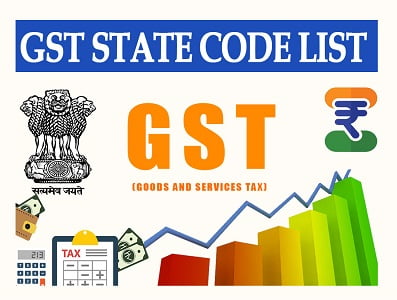
On March 19, 2017, the Parliament of India passed the Goods and Services Tax (GST). The GST came into effect in July 2017. It is a multi-stage, comprehensive and destination-based tax in India, applicable on every value addition.
In simple words, GST, or Goods and Service Tax, is a tax that works on the availability of services and goods. GST has helped replace several indirect taxes, like the service tax, in our country.
Notably, GST is applicable throughout the world. Under the GST registration, business entities must have a unique number to receive GST-related taxes. All you need to do is avail of the input credit and claim on the website.
Also Read: Everything MSMEs Need To Know About GST
What is GSTIN?
Table of Contents
GSTIN refers to every business’s GST identification number as per the CGST Act, 2017. The GSTIN is a 15-digit representation number found on the registration certificate. Once the departmental formalities are completed, a business can get its registration certificate. For a GSTIN application, you must have identification, office proof, and address.
Apart from that, you need to submit the articles of association, reports of the memorandum, and the company’s incorporation documents to the GST officer for processing the application. Your GST registration status will be sent to your mobile number as well as email ID within two weeks. You must securely keep the username and password.
Also Read: New GST Rates In 2022
What do you consider as the GST state code list?
You will find the state code in the first two digits for the GST identification format. The state code you find there helps identify any business’s operational areas and headquarters. As per GST law, even if your business has branches throughout the state, the identification number should be only one.
With a GSTIN number, all individual or business entity transactions are organized and catalogued under the GST law for legal and commercial purposes. A taxpayer uses the GST state code list for GST registration and adds GST Return invoice details.
The GST software ensures transparency regarding the tax amount that each state collects. GST regulations vary from one state to another. Therefore, it is vital to have a uniform state code. When you want to know about the financial transaction pattern of a business, you only need to use the GST number with the proper state code. This way, it gets easier to process the financial documents. Also, both Central and State GST authorities can maintain the financial paper trail for the input credit provided to the individual states.
The GST state code list comes with alphabetical codes, as mentioned below.
| STATE NAME | STATE CODE |
| JAMMU AND KASHMIR | 1 |
| HIMACHAL PRADESH | 2 |
| PUNJAB | 3 |
| CHANDIGARH | 4 |
| UTTARAKHAND | 5 |
| HARYANA | 6 |
| DELHI | 7 |
| RAJASTHAN | 8 |
| UTTAR PRADESH | 9 |
| BIHAR | 10 |
| SIKKIM | 11 |
| ARUNACHAL PRADESH | 12 |
| NAGALAND | 13 |
| MANIPUR | 14 |
| STATE NAME | STATE CODE |
| MIZORAM | 15 |
| TRIPURA | 16 |
| MEGHALAYA | 17 |
| ASSAM | 18 |
| WEST BENGAL | 19 |
| JHARKHAND | 20 |
| ODISHA | 21 |
| CHATTISGARH | 22 |
| MADHYA PRADESH | 23 |
| GUJARAT | 24 |
| DADRA AND NAGAR HAVELI AND DAMAN AND DIU | 26 |
| MAHARASHTRA | 27 |
| ANDHRA PRADESH (BEFORE DIVISION) | 28 |
| KARNATAKA | 29 |
| GOA | 30 |
| LAKSHADWEEP | 31 |
| KERALA | 32 |
| TAMIL NADU | 33 |
| PUDUCHERRY | 34 |
| ANDAMAN AND NICOBAR ISLANDS | 35 |
| TELANGANA | 36 |
| ANDHRA PRADESH (NEWLY ADDED) | 37 |
| LADAKH (NEWLY ADDED) | 38 |
| OTHER TERRITORY | 97 |
| CENTRE JURISDICTION | 99 |
Also Read: All About GST, GST Full Form & Meaning, Types Of GST In India – What Is CGST, SGST, And IGST?
How can you understand your GST jurisdiction?
The Central Board of indirect taxes (CBIC) offers every individual and business the knowledge regarding GST state code list and jurisdiction. The jurisdictional officer solves payment disputes and other matters that come under the commercial and the state concerns. If there is any jurisdiction issue between the centre and the state, the GST jurisdiction helps streamline and solve them.
As a taxpayer, you can be more transparent when you know which jurisdiction you belong to. It is essential to see the state of registration for a business to process state-bound invoices. The facility or having multiple GSTINs is available only when a business entity has its branches in different states.
Know about the GST Format
The GSTIN consists of alphanumeric characters, and the 15-digit number has similar functionality to a PAN card. The GST identification number is connected to the PAN number. For every business category, GSTIN is unique.
For a better understanding of the GSTIN format, you can get a thorough knowledge regarding the same depending on the following inputs:
- The first two digits in a GSTIN present the unique state code.
- The next ten digits are the Permanent Account Number.
- Under one PAN number, the 13th digit of GSTIN adds to the registration parameter.
- The nature of your business is reflected through the 14th digit of GSTIN.
- You will find a Z by the side of the 14th digit. It denotes the assumption of future classification directed by GST authorities.
The 15th digit, the alphanumeric character, has a check code.
Also Read: GSTIN: What Is GSTIN Number? – Check & Verify GSTIN/UIN Number Online?
The process of knowing the GST State Code List and jurisdiction
- If you want to find out under which jurisdiction the state code and your business are categorized, here is the process.
- You have to visit the GST CBIDT website and log in. Find the tab named ‘services.’
- Choose “Know your jurisdiction” from the drop-down menu.
- Select your respective state from the column provided on the left.
- Select the zone along with the commissioner’s office. Once you update the details, the range and fields under division will be populated.
- Choose the correct options from the drop-down for your GST jurisdiction.
Also Read: GST Return – What Is GST Return? Who Should File, Due Dates & Types Of GST Returns?
How will taxpayers know more about their GST requirements?
There is a GST self-help portal for taxpayers to lodge complaints about jurisdiction documents of a business entity. Other than jurisdiction, taxpayers can lodge complaints about several issues. The website is designed so that the consumers can post screenshots to present the problems. Through online registration of complaints, an immediate resolution will be provided for technical issues the consumers face while determining their jurisdiction.







